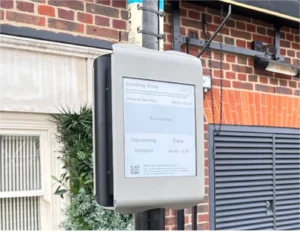Schoolchildren in Southwark, London are taking part in a wide-ranging study to look at the effects of better air on kids’ brain development.
Researchers from a number of institutions including Queen Mary University of London, in Mile End, are examining pupils at 85 schools in London and Luton, including several in Southwark.
The aim is to find out how the Ultra-Low Emission Zone (ULEZ), which seeks to cut traffic and improve air quality in central London, affects children’s ability to solve problems and remember things. The Chill Cognition study, which lasts three years, will also look at how children’s mental health develops over the period, reports Southwark News.
Other research organisations involved include Imperial College and the Bradford Institute for Health Research, as well as the Universities of Cambridge and Leeds, among others.
Professor Chris Griffiths, Professor of Primary Care at Queen Mary University of London and study lead, said: “London’s Ultra Low Emission Zone and UK-wide lockdowns have resulted in unprecedented reductions in traffic pollution and there has never been a better opportunity to address how air pollution affects children’s health.
“We hope to determine whether improved air quality, and specifically, traffic-related air pollution, results in better developmental and mental health outcomes for young people.
Professor Mark Mon-Williams, Professor of Psychology at the Bradford Institute of Health Research said: “Ultimately this research could help to improve educational outcomes, identify children at risk of future mental health problems due to the air quality where they live, and this could enable earlier intervention and allow public services to provide the necessary support and action.”
Dr Ian Mudway, Senior Lecturer in the MRC Centre for Environment and Health at Imperial College said: “Results of Chill Cognition may throw light on causes of health inequalities whereby children from disadvantaged backgrounds may be more adversely affected by poor air quality.”
The ULEZ cut roadside nitrogen dioxide by almost one third from 2018-2020, researchers said. The zone is set to expand from central London to the North and South Circular roads on October 25 this year. It already includes part of Southwark, from Blackfriars Bridge in the north-west to the Elephant & Castle roundabout in the south, and Tower Bridge Road in the east.
The study builds on work done as part of the ongoing Chill study, which is looking at lung development of children going to school within the ULEZ.





















